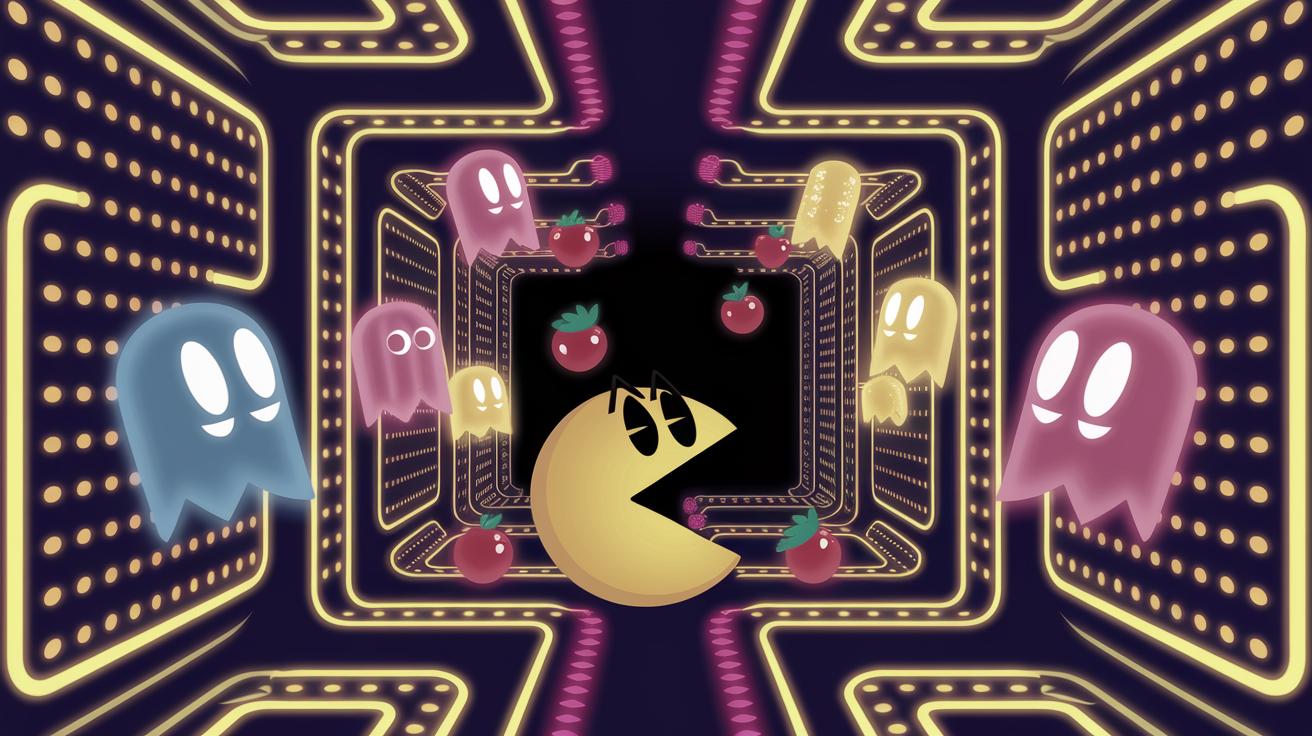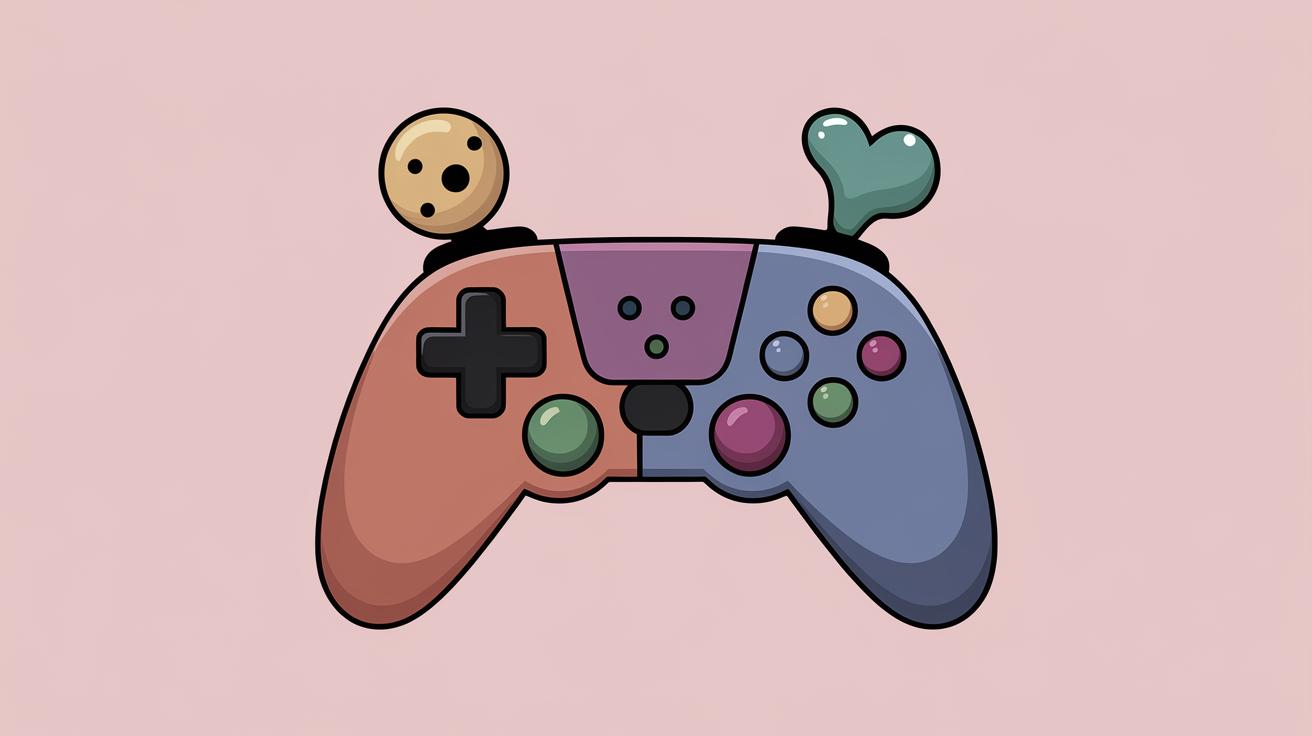Playing Pac-Man: A Blend of Nostalgia and Modernity
Pac-Man, an iconic video game that first delighted audiences in the 1980s, continues to be a source of entertainment through its simple yet engrossing gameplay. In this blog post, we explore Pac-Man’s enduring appeal and its digital rebirth as a Google Easter Egg, and dive into its updated, enhanced version. Discover how to interact with this Easter Egg and understand its impact on gaming culture. With insights into its facets—from visuals to gameplay experience—this post serves as a comprehensive guide to both veteran players and newcomers, highlighting the timeless charm and modern enhancements of this beloved game. Whether you’re a nostalgic Pac-Man aficionado or new to the experience, join us in exploring what makes this game a lasting treasure.
Quick Facts
Pac-Man was first introduced to the gaming community by Namco in 1980, quickly becoming a landmark in the gaming industry. Its creator, Toru Iwatani, designed it with simplicity in mind, focusing on engaging gameplay over graphic intricacies. The game centers around guiding the character Pac-Man through a maze to eat all the yellow dots, while avoiding four ghosts.
Praising its universal appeal, several attributes contribute to Pac-Man’s success: its straightforward mechanics, appealing visual design, and strategic depth. Over four decades later, the game’s influence remains evident in various cultural references, spin-offs, and adaptations, cementing its place as a pioneering force in the realm of interactive entertainment.
The Google Official Version
Discovery and Activation
In 2010, to celebrate the 30th anniversary of Pac-Man, Google incorporated the game into its homepage as a playable doodle. This spontaneous move allowed users to indulge in a nostalgic journey directly from their browsers. The game became instantly popular, captivating millions within hours of its release.
To access the Google version, players could simply navigate to Google’s homepage and begin playing with a click on the iconic “Insert Coin” button. Unlike traditional redirects, it offered direct, hassle-free access to a beloved classic, illustrating Google’s commitment to enhancing user experience through playful interaction.
Visuals and Features
Staying true to its original design, the Google Pac-Man kept the vibrant colors and timeless graphics, ensuring that the visual essence of the classic game remained untouched. The maze was initially a faithful recreation, inviting users on a nostalgia trip back to the arcade days.
Even the sound effects were meticulously adapted, echoing the joy and challenge inherent to the game. Consequently, players were not only experiencing a visual callback but were also immersed in the auditory nuances that made Pac-Man a global phenomenon.
Impact and Reception
The Google Pac-Man quickly resonated with fans, resulting in widespread media coverage and creating a surge of interest in both the game and its origins. Businesses reported noticeable drops in productivity as employees worldwide took brief pauses to engage with the classic.
This initiative by Google was met with acclaim, proving that the allure of Pac-Man still had the power to captivate. The remarkable reception underscored the game’s timeless appeal and highlighted the potential for integrating nostalgic experiences into modern platforms.
Interact with the Easter Egg
Engaging with the Pac-Man Easter Egg involves a simple process. Users can activate it directly from their browser by searching “Google Pac-Man” and discovering the doodle in its interactive form. This seamless integration illustrates how accessible retro gaming experiences can be woven into contemporary online environments.
This Easter Egg serves as both an homage to the past and an innovative approach to digital entertainment. By inviting users to return to the nostalgic realms of vintage gaming, Google demonstrates how traditional experiences can thrive amidst modern technological landscapes.
Experiencing the Enhanced Easter Egg
The Enhanced Easter Egg Experience
Building on the 2010 version, Google later introduced enhanced features to the Pac-Man experience. These enhancements included smooth gameplay and improved graphic fidelity, ensuring that every playthrough was as satisfying as the original while optimized for contemporary devices.
The enhancements were subtle, focusing on performance and user engagement rather than altering the core gameplay. As a result, the updates enriched the player experience without detracting from the nostalgia that defines Pac-Man’s lasting appeal.
Enhanced Version vs. Original
While the original Google Pac-Man remained faithful to its ancestor, the enhanced version took player feedback into account, refining elements to meet rising expectations. These updates brought the game in line with modern standards, offering smoother interactions and a more responsive gaming environment.
The balance struck between innovation and nostalgia emphasizes the significance of respecting a classic’s foundations while ensuring relevance in a fast-evolving digital landscape. This careful calibration highlights how timeless charm can be preserved alongside technological advancement.
Reason for Enhancements
The rationale behind enhancing the Google Pac-Man lies in the desire to retain the game’s popularity while catering to contemporary user preferences. Recognizing the growing demand for improved digital interactions, enhancements were a strategic choice to maintain engagement and extend the game’s reach beyond its traditional audience.
Moreover, the enhancements help introduce the timeless game to younger generations who may not have experienced its original form, paving the way for future enjoyment and continued cultural significance.
Frequently Asked Questions (FAQ)
Conclusion
The evolution of Pac-Man, from its arcade origins to its reimagining as a Google Easter Egg, illustrates gaming’s potential to transcend time and technology. While the digital landscape is ever-changing, the core elements that define Pac-Man—its simplicity, challenge, and charm—remain evergreen.
As we look to the future, the potential for further enhancements and integrations is boundless. Whether by introducing new features or expanding accessibility, Pac-Man’s journey continues to offer insights into balancing innovation with nostalgia, ensuring its place in gaming history remains unchallenged.
| Section | Summary |
|---|---|
| Quick Facts | Introduced in 1980 by Namco, Pac-Man became a cultural icon. |
| The Google Official Version | In 2010, Google celebrated Pac-Man’s 30th anniversary with a playable doodle. |
| Interact with the Easter Egg | Google’s Easter Egg recreates the classic experience for modern browsers. |
| Experiencing the Enhanced Easter Egg | Enhanced aesthetics and performance offer a refined retro gaming experience. |
| Frequently Asked Questions (FAQ) | Discusses Pac-Man’s ongoing appeal and potential future developments. |


